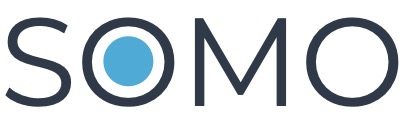Citizen Generated Data (CGD)
1. Overview of Funding Sources for CGD Projects
a. Grants
- Definition: Financial support provided by government agencies, foundations, or international organizations for specific projects or initiatives.
- Types of Grants:
- Government Grants: Often focused on local or national development priorities (e.g., infrastructure, education, health).
- Foundation Grants: Private philanthropic organizations that support specific causes (e.g., Bill & Melinda Gates Foundation).
- International Grants: Funding from global institutions like the UN, World Bank, or international NGOs.
- Pros: Generally provide larger sums of money for longer-term projects.
- Cons: Highly competitive; often require detailed applications, strict reporting, and accountability.
b. Donations
- Definition: Contributions from individuals, local businesses, or charitable organizations to support a project or cause.
- Types of Donations:
- Individual Donations: Small contributions from community members or supporters.
- Corporate Donations: Contributions from businesses that may be part of corporate social responsibility (CSR) programs.
- Pros: Can be flexible and easier to access than grants.
- Cons: Donations are typically smaller and less consistent.
c. Partnerships
- Definition: Collaborations with other organizations, businesses, or institutions that provide funding, resources, or in-kind support.
- Examples of Partnerships:
- Private Sector: Businesses may partner with CGD projects for mutual benefit, providing funding, technical expertise, or supplies.
- Non-Profit Organizations: Partnerships with NGOs or international organizations can bring additional funding and resources.
- Public-Private Partnerships (PPPs): Joint ventures between the government and private sector to fund and implement projects.
- Pros: Often result in long-term support and collaboration.
- Cons: May require alignment of goals and formal agreements.
d. Crowdsourcing
- Definition: Raising small amounts of money from a large number of people, typically via online platforms (e.g., Kickstarter, GoFundMe, GlobalGiving).
- Advantages:
- Broader Reach: Can tap into a global audience of potential donors.
- Flexibility: Donors can contribute smaller amounts, making it accessible to a wider range of supporters.
- Challenges: Requires strong digital marketing and social media presence to be successful.
2. Writing Compelling Grant Proposals and Fundraising Appeals
a. Key Elements of a Grant Proposal
- Executive Summary: A concise overview of the project, its goals, and the funding request.
- Problem Statement: Clearly define the issue the project will address, using data to demonstrate the need.
- Project Description: Outline the project's objectives, activities, timeline, and methods.
- Goals and Objectives: State measurable and specific outcomes the project aims to achieve (SMART objectives: Specific, Measurable, Achievable, Relevant, Time-bound).
- Budget: Provide a detailed, transparent budget that outlines how the funds will be spent.
- Sustainability Plan: Describe how the project’s impact will be sustained beyond the funding period.
- Monitoring and Evaluation: Detail the methods for tracking progress and assessing impact.
- Conclusion: Summarize the key points and emphasize the importance of the project.
b. Storytelling in Fundraising Appeals
- Engage Emotionally: Use storytelling to connect with potential donors, focusing on real-life impact and personal stories.
- Highlight the Community’s Voice: Incorporate quotes or testimonials from community members who will benefit from the project.
- Create a Clear Call to Action: Be direct about what you want donors or partners to do (e.g., donate, volunteer, partner).
c. Demonstrating Impact
- Use Data and Evidence: Present clear metrics and evidence of past successes or the anticipated outcomes of the project.
- Visuals: Include infographics, photos, or videos that show the project's potential impact.
- Focus on Outcomes: Rather than just activities, emphasize the positive changes the project will achieve for the community (e.g., improved health, education, environmental sustainability).
3. Managing and Maintaining Relationships with Donors and Partners
a. Building Long-Term Relationships
- Regular Communication: Keep donors informed about the project’s progress through newsletters, reports, or meetings.
- Show Appreciation: Regularly thank donors for their contributions, both publicly and privately. Personalized thank-you notes or recognition on social media can go a long way.
- Engage Donors Beyond Funding: Invite donors and partners to visit the project, participate in events, or volunteer in related activities.
b. Reporting and Accountability Practices
- Transparent Reporting: Provide regular, transparent reports on how funds are being used and the progress being made. Include financial statements and project milestones.
- Impact Reports: Share stories of success and data-driven outcomes to demonstrate the impact of their support.
- Adapting to Donor Preferences: Some donors prefer specific formats (e.g., infographics, video reports). Tailor your reporting style to their preferences.
c. Conflict Management and Problem-Solving
- Anticipate Challenges: Be proactive in addressing any potential challenges in the project. Communicate these with donors or partners early and propose solutions.
- Maintaining Trust: If there are issues with the project or delays, be transparent and honest with donors and partners. Trust is built through open communication and accountability.
Last modified: Friday, 20 September 2024, 4:18 PM


